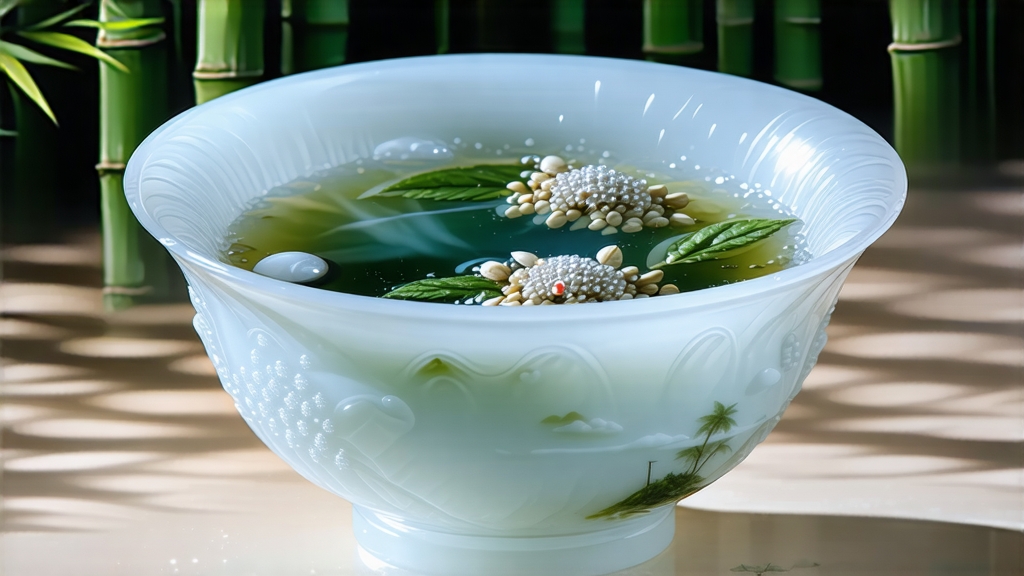
Tucked high on the forested ridges of Yunnan’s Simao and Lincang prefectures, a tea that the locals call Yue Guang Bai—“Moonlight White”—is crafted in a silence broken only by cicadas and the soft rustle of leaves. To the international eye it looks like a white tea, yet its genetic heart beats with the ancient Da Ye (Big Leaf) assamica tea trees that gave the world pu-erh. This contradiction is the first clue that Yue Guang Bai refuses to be filed neatly into any Western tea taxonomy; instead it invites the drinker into a Chinese aesthetic where colour, aroma and story are allowed to blur, the way ink spreads on rice paper.
1. Historical haze
Written records mentioning “moonlight withered” tea appear only in the late 1990s, leading some merchants to dismiss the tea as a commercial invention. Oral history among the Hani and Bulang minorities, however, tells of forest-dwelling tea makers who, wary of the fierce mountain sun, moved fresh leaf under the open night sky so that dew and starlight could “cool the fire” in the leaf. When state-owned tea factories in Yunnan sought lighter, fragrant products to compete with Fujian white teas, these household techniques were formalised, and the poetic name Yue Guang Bai entered the trade. Thus the tea is both ancient and modern: ancient because the leaf material comes from trees centuries old, modern because the style stabilised only after 2003.
2. From one leaf, two faces
Yue Guang Bai is not a graded set of buds and leaves like Fujian’s Bai Hao Yin Zhen or Bai Mu Dan; it is typically harvested as one bud-one leaf, occasionally one bud-two leaves. The upper side of the blade is dark, almost charcoal; the underside is silvery down. When the leaf is gently folded the tea looks like a crescent moon riding a bright cloud—an image that inspired the name. Because Yunnan’s spring arrives earlier than Fujian’s, the picking window opens in late February and closes by mid-April, before the monsoon rain dilutes the mountain aromatics.
3. Moon-withering: the craft of silence
The processing steps look minimalist on paper—wither, dry, sort—but each is governed by sky-reading skills that would baffle a meteorologist. After picking, the leaf is spread on raised bamboo trays inside a ventilated barn. Doors remain open from dusk to dawn so that night air, rich in forest volatiles, circulates freely. No direct sunlight is allowed; if the morning sun appears, workers quickly wheel the trays into shade. This “moon-withering” lasts 48–60 hours, during which moisture drops from 75 % to roughly 30 % and enzymatic oxidation hovers at 5–10 %, enough to soften grassiness yet preserve a bright, grape-like top note. Once the leaf feels velvety and the aroma shifts from green bamboo to ripe honeydew, the tea is transferred to low-temperature dryers (35–40 °C) for another six hours to fix the moisture at 7 %. No rolling, no frying, no baking—Yue Guang Bai is white tea in the literal sense: almost no intervention beyond time and air.
4. Flavour translation
Infused at 85 °C for 30 seconds, the liquor glows pale champagne. The first sip carries a cool, almost mint-like lift reminiscent of starched linen dried at altitude. This evolves into white peach, then into a faint malt that Fujian whites never show—the assamica signature. The swallow leaves a lingering note of vanilla orchid and a returning sweetness (huí gān) that arrives at the sides of the tongue minutes later. Because the leaf is large, the tea can be steeped five times without collapsing, each infusion trading aroma for texture: session one is fragrance, sessions two–three are body, sessions four–five are mineral aftershocks of granite soil.
5. Brewing protocols
Western cup: 3 g per 300 ml, 80 °C, 3 min. This yields a gentle introduction, but you will miss the evolving drama.
Gongfu style (preferred): 5 g in a 120 ml gaiwan; 85 °C; 30 s / 25 s / 35 s / 45 s / 60 s.